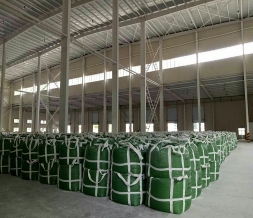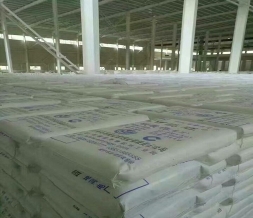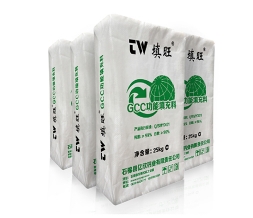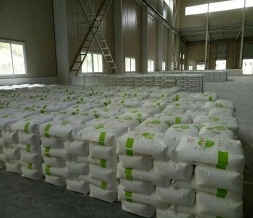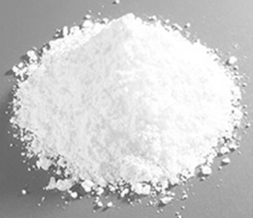The 2015 National Calcium Carbonate Industry Annual Conference hosted by
the China Inorganic Salt Industry Association Calcium Carbonate Industry Branch
was held in Hezhou, Guangxi. The conference aims to promote exchanges and
cooperation between research institutes and enterprises, and promote low-carbon,
environmentally-friendly, clean and green development of the calcium carbonate
industry to achieve quality and efficiency.
The reporter of China Chemical Industry News learned from the meeting that
the current development of various regions and enterprises in the calcium
carbonate industry is very uneven, facing problems such as overcapacity,
declining efficiency and fierce competition for low-end products. Ye Haiting,
honorary president of China Inorganic Salt Industry Association, stressed that
enterprises that are not innovative will be eliminated. Calcium carbonate
enterprises should implement innovations in production processes, products,
marketing, culture and management, and strive to promote sustainable development
of the industry.
Liu Shuwen, president of the Calcium Carbonate Industry Branch of China
Inorganic Salt Industry Association, said that to achieve quality improvement
and efficiency improvement, it is necessary to prevent low-level and
homogenization and redundant construction through scientific and technological
innovation and industrial restructuring; to the National Industrial Structure
Adjustment Guidance Catalogue (revised in 2014) As a guide, we will guide
enterprises to transform and upgrade in terms of energy saving and emission
reduction, quality improvement and consumption reduction, brand efficiency,
etc., and do a good job in terms of specialization, precision, speciality and
newness. The so-called light and heavy, that is, calcium carbonate production
enterprises should produce light and heavy calcium carbonate at the same time,
and combine the two under certain conditions to make the products more
effective.
Tao Lianyin, executive deputy secretary-general of China Inorganic Salt
Industry Association, believes that the adjustment of industry product structure
should increase the proportion of specialized and refined products and compress
the output of low-performance products. According to the drying capacity of
equipment and the accumulated experience of industry development over the years,
medium-sized enterprises are suitable for “532” and small enterprises are
suitable for “311” capacity structure model. These three figures represent the
production capacity of light calcium carbonate, active fine calcium carbonate
and heavy calcium carbonate. The production capacity structure is implemented,
and water recycling can be realized in the production process to reduce
wastewater discharge. In addition, qualified enterprises should accelerate the
development of intelligent and networked, transform the technological process
with information technology, and win the initiative in the new round of
scientific and technological revolution and industrial transformation and
upgrading.
Hu Yongqi, vice president of Hebei University of Science and Technology and
expert group of calcium and magnesium branch of China Inorganic Salt Industry
Association, pointed out that the technological innovation of calcium carbonate
industry should seek breakthroughs in production technology and equipment. Among
them, the production process should be developed in the direction of production
functionalization and specialization products, and the added value of products
should be improved. For example, the development of heavy calcium carbonate
products dedicated to a certain industry, the added value is several times or
even higher than ordinary products. For example, by surface modification of
existing low-end products, the production of special crystalline calcium
carbonate into the plastic can improve the performance of the plastic while
greatly reducing the production cost. In terms of production equipment, we
should aim at energy conservation and consumption reduction, promote the
development of China's equipment on the basis of large-scale, and gradually
surpass the advanced level of foreign countries.
Fang Xiaoxia, chief engineer of Zhejiang Wuzhou Calcium Industry Co., Ltd.,
told reporters that China's calcium carbonate raw materials are abundant, and
the high-performance calcium carbonate products produced after modification can
completely replace carbon black, white carbon black, kaolin, titanium dioxide
and other fillers. Cost, increase profits.
News link
Calcium carbonate production process is mainly divided into two categories:
one is light calcium carbonate (light calcium), which is made by chemical method
of limestone. The production process is long, and the “three wastes” emit more,
but the particles are fine and the product quality is high. Meet a variety of
user requirements. The other type is heavy calcium carbonate (heavy calcium),
which directly crushes and grinds limestone into a product. The production
process of heavy calcium is short, and the “three wastes” have low emissions and
low energy consumption.
In recent years, developed countries have focused on the development of
heavy calcium production technology. With the advancement of heavy calcium
processing equipment and grading technology, a variety of fine calcium carbonate
products that meet the major downstream industries such as plastics and
papermaking have come out, and manufacturers have adopted energy-efficient
Large-scale equipment and advanced production technology, the product replaces
light calcium on a large scale, and the environmental protection effect is
remarkable. However, the development of China's calcium carbonate industry has
long focused on light calcium production, and the development of heavy calcium
production is slow. At present, the ratio of heavy calcium to light calcium used
in the plastics industry in developed countries is 20:1, while the ratio of
heavy calcium to light calcium in China's plastics industry is only about 2:1,
far lower than that of developed countries.
Activated calcium carbonate is modified on the basis of ordinary calcium
carbonate, and can achieve the dual purpose of filling and modifying in
composite products. These modifications include modification of the crystal
form, particle size, particle size distribution and surface properties of
calcium carbonate to improve its overall performance.



